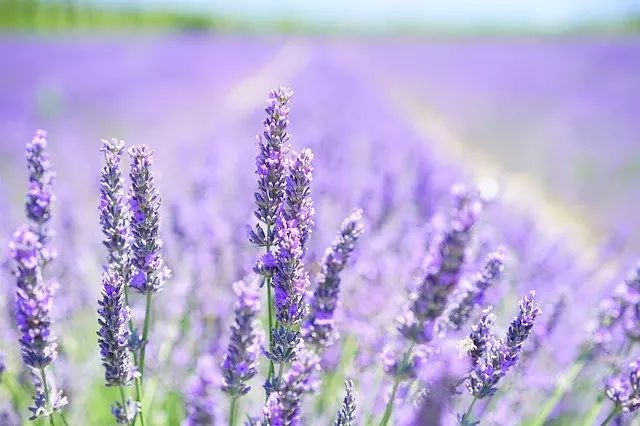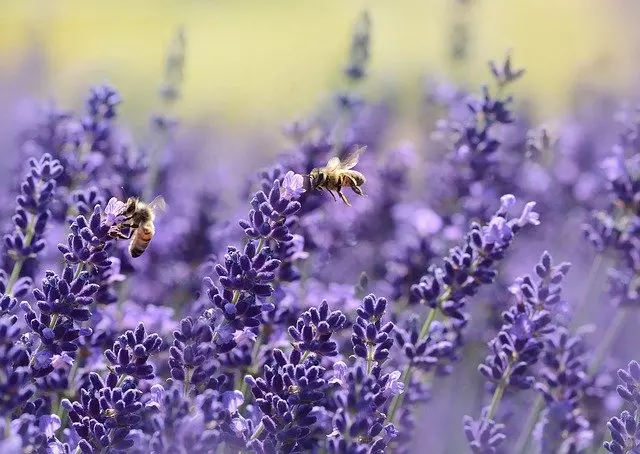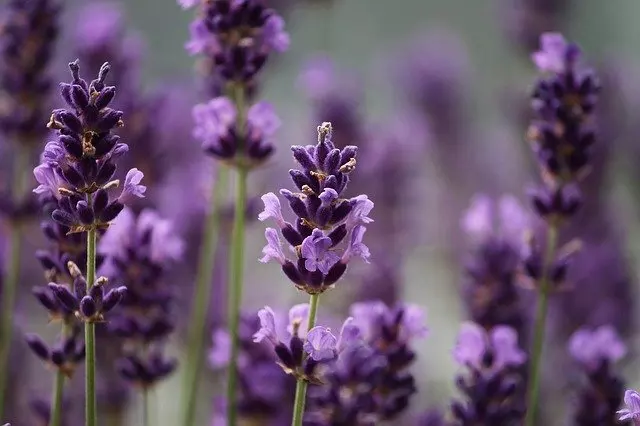In the country of Portugal, the most representative of the nation is lavender, which has different uses, one of the most typical being the creation of aromas. In this article, we will tell you all about the National Flower of Portugal.
This plant belongs to the Lamiaceae family, which has a bushy appearance with woody, square, and very hairy stems. It can grow up to one meter tall. Its leaves are green, elongated, and thin, about 2″ (5 centimeters) by 1/16″ (2 millimeters).
Its flowers are borne at the apex of the branches in the form of spikes. The flowers are purple in color and are borne in a close spiral. Each bloom measures between 2″ and 4″ (5 and 10 centimeters). This plant is known worldwide for its aromatic benefits.
Table of Contents
National Flower of Portugal Characteristics
Lavender is a type of plant that flowers and branches from the base, which is known as suffruticose, it can last for over 2 years where the stem is square-shaped with many leaf-like parts at the bottom and its leaves are elliptical in shape with a lance-shaped tip in its entirety, with a protuberance that can look like teeth or small hairs. This plant consists of more than 30 species that are by no means unknown.
Among the main features of lavender is that it is world-renowned for its fragrance and is coveted as one of the plants used mainly in aromatherapy and in European countries such as France it is used to make perfumes. It is also widely used to repel insects that lodge inside closets and to make various types of essential oils that are used for body ailments by distilling its thick flowers.
There is also a type of preserved lavender that consists of completely replacing the sap with a mixture whose main component is glycerin, which means that this plant looks well-preserved and fresh for years as if it had just been cut, and is usually sold in the form of a bouquet that can include up to 120 branches and used as an ornament at home.

Lavender Distribution and Habitat
Lavender is widely distributed in various regions of the world, such as the five archipelagos of the North Atlantic, relatively close to Africa, known as Macaronesia, as well as Arabia, South Asia, and also India. They have also been implanted mainly in European countries such as Italy, Switzerland, Portugal, Spain, and what used to be known as Yugoslavia, as well as in other countries such as England, Cyprus, Ireland, Kenya, Japan, Greece, Hungary, the Commonwealth of Independent States, Tanganyika, Bulgaria, Tasmania, and in South American countries such as Brazil and Argentina.
After that, various mixtures of species were cultivated for distillation purposes. Their main habitat is in drought climates like those of the Mediterranean basin, but they have also been seen in more humid climates like those found in England and also in other countries like Ireland, where only Choisel lavender, also known as English lavender, is grown. It is important to know that if the droughts are too extensive, this will cause the lavender essence to decrease to less than 50%, so it is ideal to have it in sunny Mediterranean hillside and mountain climates that have soil with loose particles and ample sunlight and moisture-free air.
National flower of Portugal can be seen thriving in regions where the altitude is no lower than 1968 ft (600 m) above sea level and a maximum of 5905 ft (1800 m) above sea level, although the standard for optimization is between 2624 ft (800 m) above sea level and 3937 ft (1200 m) above sea level, as this is specifically where the flower can generate much higher and better quality aromas. It also chooses to grow in soils with high calcium levels and cannot tolerate living in soils with a very low pH, but despite this, it does not require a lot of nutrients extracted from the soil and little humus, such as soils with many stones.

Lavender Care and Pruning
Lavender (National flower of Portugal) is a plant that doesn’t require much care, so just annually you can add some fertilizer by making a combination of lime and manure and add them to the soil at the beginning of the spring season, although another option to provide more nutrients to this beautiful plant is to add a fish-based solution in liquid form or some compilation of plants like algae that should be added to the soil a few times during the summer season. Be careful not to let lavender weed develop around the lavender, where a little mulch in a thin layer may be enough to prevent its growth.
This can even be used as decoration as you can get a wide variety of mulches that can be of different colors, shapes like gravel, and even the shells of other seashells in pieces. In any case, this can help prevent the development of weeds and will also protect the plant from the cold as it will keep the roots at a good temperature. After this, it is very important to water the lavender, as this cannot be done extensively or in large amounts as this could kill the lavender if the root is submerged in water or kept wet for too long, as this is one of the main reasons why lavender does not develop properly.
One way to identify if the watering is correct is to allow the soil to dry out after moistening and take into account the fact that it should not be too little, as the lavender may dehydrate and die. It is also important to prune this plant at least annually and in the spring season so that the effect is better and new leaves grow in better condition. Ideally, this should be done with special scissors or bush shears to give them a better silhouette and knowing that you should prune a little more than half the total size of the plant, as this will promote development while not increasing the foliage too much.
We hope you liked this article about the national flower of Portugal. If you are interested in knowing more about lavender we recommend our articles about How to Grow Lavender in a Pot from Seed and How to Propagate Lavender.


